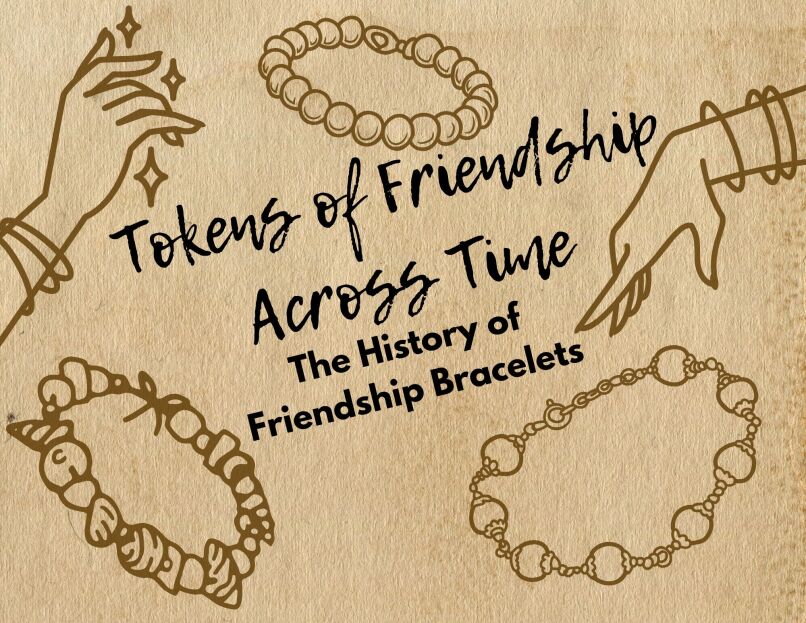
Tokens of Friendship Across Time: The History of Friendship Bracelets
The Taylor Swift Eras tour has brought the exchange of friendship bracelets into mainstream culture. The Niagara-on-the-Lake Museum’s Eras Tour and our Summer Drop-In Series bracelet making event has friendship bracelets on our minds too. Our Eras Tour is an exhibit on display at the NOTL until December of 2025. It celebrates our organization’s 130-year anniversary and is a play on Taylor Swift’s Eras Tour. Our Summer Drop-In Series is a collection of drop-in events for people of all ages with fun things to do and history to learn, with our first event being bracelet making. Check our websites for future Summer Drop-In Series events on July 25th, August 3rd, 22nd and 29th.
The history of friendship bracelets is fascinating, as people have been making bracelets and exchanging tokens of friendship around the world for centuries. Fossils have been found of woven string and tied knots that are between 15,000 and 17,000 years old. Decorative knot-tying for bracelets has been traced back to China in 481 BCE. The Eastern Woodland Indigenous people of North America have been crafting beads for over 4,000 years. Knights in the Medieval era would often wear golden Zweifelkoten, or double knots, on their chests – gifts from friends to keep the knight safe during battle. English people in the 1800’s would exchange locks of hair with friends and loved ones, which were often woven into wreaths or made into medallions for necklaces.
Even though tokens of friendship have been exchanged by people worldwide for thousands of years, the weaving, beading and especially wampum traditions of the North American Indigenous peoples practices are widely regarded as the inspiration for modern friendship bracelets. ‘Wampum’ refers to a type of bead made from shells which is particularly significant to Eastern Woodlands Indigenous peoples of North America. Shells are meticulously cut, filed, sanded, and drilled to create small, beautiful, and delicate beads. Wampum was often woven into elaborate belts, necklaces, or other accessories using plant fiber or animal sinew. Wampum-woven items served many purposes ranging from storytelling and formalizing agreements to being used as ransom payment. Wampum belts were used to solidify and be a physical representation of friendships and treaties between various Indigenous nations and are often what are thought of when people wonder what might have inspired friendship bracelets as we know them today.
Knotted and woven friendship bracelets as we know them today appeared in the 1960’s during the hippie movement, as people around the world sought to embrace all things natural, peace, and love. Friendship bracelets rose to popularity in the 1980’s in North America, only to enter the concert-going scene in the 1990’s. Bracelets were brought to concerts by Electronic Dance Music fans to exchange with others and to display symbols of their shared community before they became the larger cultural phenomenon we know today.
Now, friendship bracelets can be knotted, woven or beaded, and are often exchanged by friends or Swifties at concerts! It’s beautiful to remember the inherent human desire to gift friends and loved ones with trinkets for safe keeping to show our care. Across time, we are connected to humanity with our love for one another.
Are you interested in learning more or curious about where this information is from?
Check below for the links to sources utilized to write this post.
https://www.nationalgeographic.com/culture/article/history-of-friendship-bracelets
https://asiheritage.ca/a-thread-between-generations-indigenous-beadwork-from-then-to-now/
https://www.thecanadianencyclopedia.ca/en/article/wampum
https://www.history.com/articles/what-is-wampum-and-how-was-it-used
https://www.musee-mccord-stewart.ca/en/blog/researching-history-wampum-belts/



